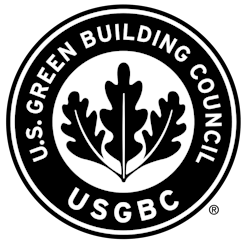USGBC ranks top 10 states for green buildings
The U.S. Green Building Council (USGBC) has released its annual ranking of U.S. states leading the way on green building technologies, with Massachusetts topping the list.
The USGBC ranking is based on LEED-certified gross square footage per capita over the past year. The LEED rating system is the world’s most widely used green building program and was created by USGBC as a leadership standard defining best practices for healthy, high-performing green buildings.
The states following Massachusetts — where 96 buildings encompassing over 26 million square feet were LEED-certified in 2022, equating to nearly 3.7 LEED-certified square feet per resident — were Illinois (3.47 square feet per capita), New York (3.17 square feet per capita), California (2.43 square feet per capita), and Maryland (2.39 square feet per capita).
As a federal territory, Washington, D.C., does not appear in the official top 10 list of states, but it consistently leads the nation in LEED-certified square footage per capita, in part because of the federal government and District’s ongoing commitments to green building. In 2022, the nation’s capital certified more than 46 square feet of space per resident across 115 green building projects.
The full rankings are as follows:
In 2022, the top 10 states certified 1,225 projects and nearly 353 million gross square feet under LEED.
Since it was first established in 2000, LEED’s metrics-based system has set the standard for healthy, resilient, green buildings. In 2022, USGBC surpassed 100,000 LEED-certified projects globally, totaling more than 11 billion certified gross square feet.
Peter Templeton, USGBC president and CEO, commented
“It was a strong year for LEED certifications across the U.S. as companies and governments embrace LEED as a tool for meeting ESG goals and organizational commitments to climate action, occupant wellbeing and resource efficiency. LEED buildings are environmentally friendly, cutting their emissions and waste, and use less energy and water. At the same time, they also help reduce operational and maintenance costs, contributing to the bottom line.”
For more news, projects, and profiles in the smart buildings ecosystem, subscribe to the SBT newsletter and follow us on LinkedIn, Twitter, and Facebook.
